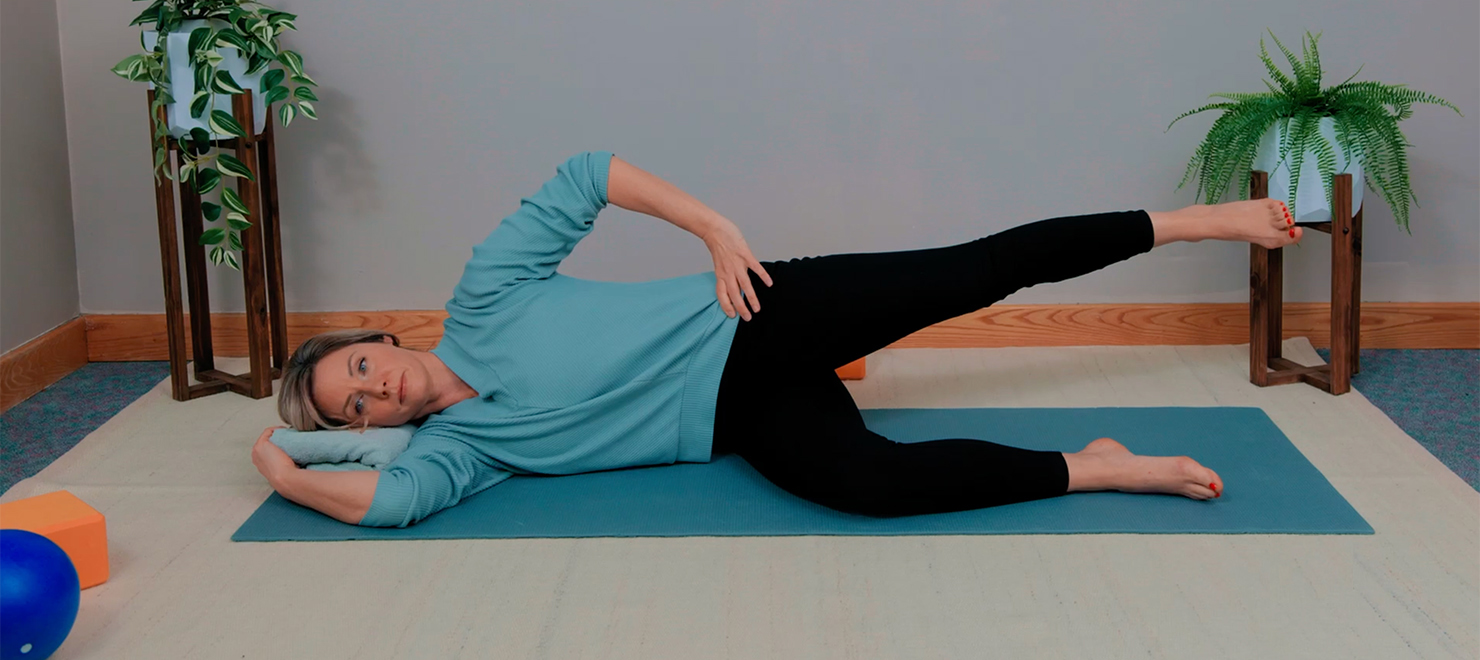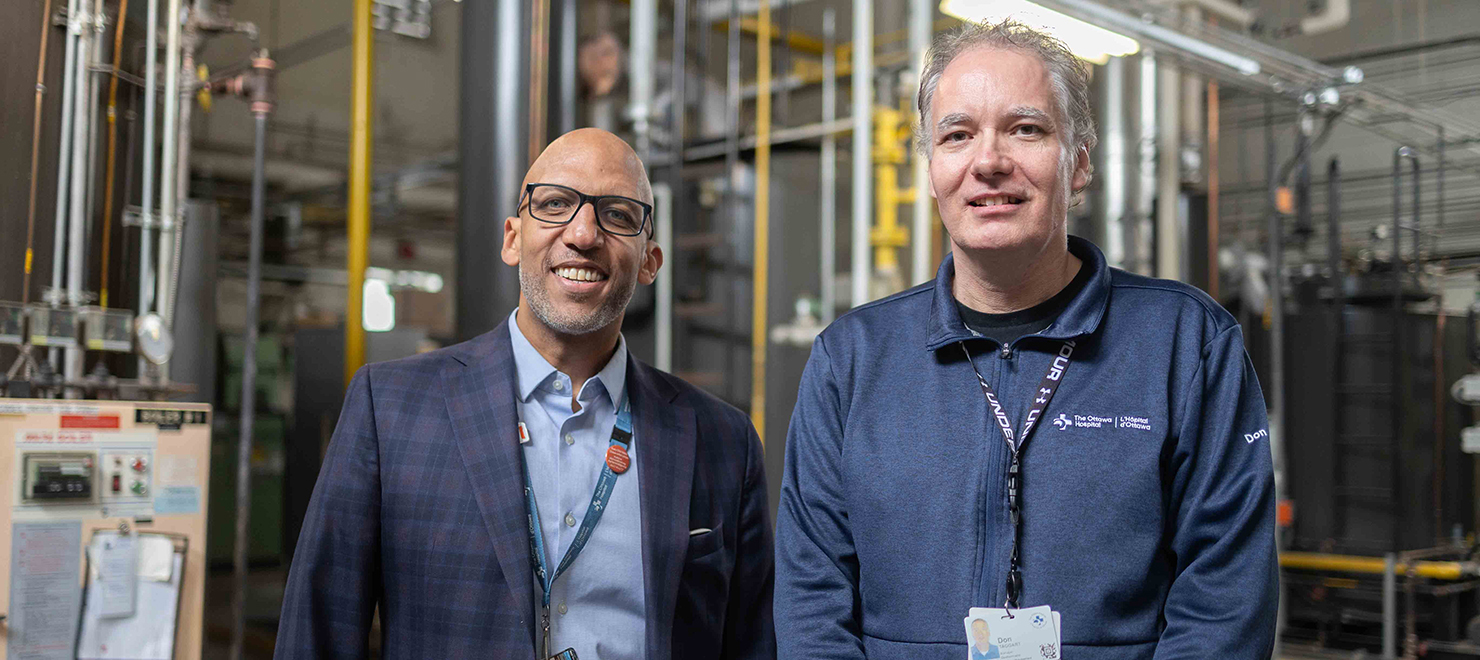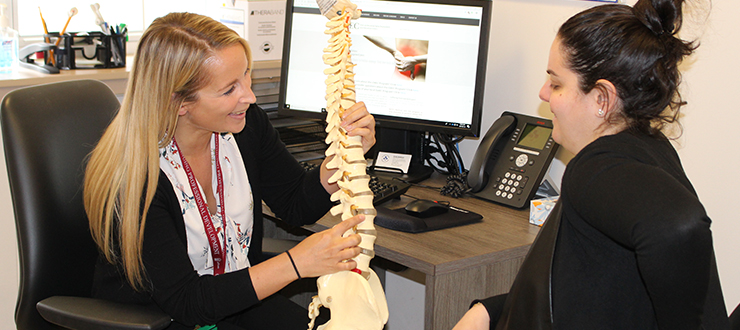
Kirstin Henderson (left), practice lead for the Rapid Access Clinic for Low Back Pain, explains parts of the spine to a patient. Education is one of the focuses of the clinic.
Lynne Miles is grateful that her life has returned to normal. She felt debilitating low back pain for three months before she went to the Rapid Access Clinic for Low Back Pain (formerly the Inter-professional Spine Assessment and Education Clinic) at The Ottawa Hospital.
Lynne’s severe low back pain started suddenly in October 2018 and ran down her left leg. She lost sensation in her left foot. She couldn’t bend down or sit. The pain was so intense that she refused to sit during a job interview. Driving was impossible. Even though she has a high pain tolerance, the low back pain was affecting her psychologically.
To help her cope, her family doctor prescribed painkillers, but there was no improvement. In an effort to get better, Lynne tried alternative manual therapies such as chiropractor manipulation, acupuncture, physiotherapy and massage. Nothing made her condition manageable. Having run out of ideas, Lynne returned to her family doctor.
That’s when she was referred to the Rapid Access Clinic for Low Back Pain at The Ottawa Hospital.
“I left from my first appointment at the clinic with an exercise plan, a referral to physiotherapy and a new prescription,” explained Lynne. Two-and-a-half weeks after her initial visit to the clinic, Lynne’s pain went from a nine to a two on the ten-point pain scale.
“It was like night and day,” she said.
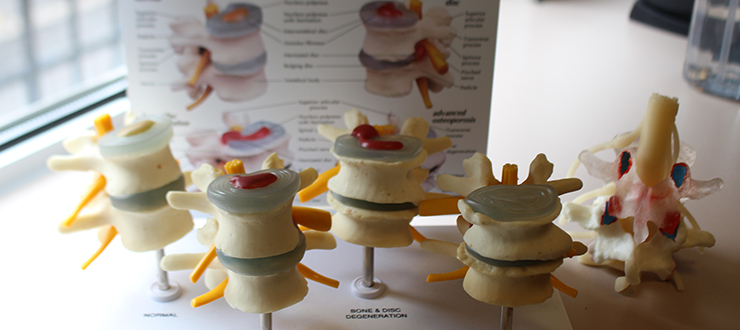
The Rapid Access Clinic for Low Back Pain is a provincial initiative that aims to reduce the long waiting time to see a specialist. It aims to provide patients with rapid access to specialized, holistic care they need with a focus on education and self-management. The evaluation for the pilot program showed a 99 percent patient satisfaction rate.
“Patients who are referred to the clinic receive standardized rapid assessments where their condition is looked at more holistically and they are given personalized self-management plans,” explained Kirstin Henderson, practice lead for the Rapid Access Clinic for Low Back Pain.
The clinic helps direct patients to the most appropriate care if required. The focus is to identify and direct a plan of care for each patient based on their specific issues using evidence-based recommendations. Patients are empowered to undertake their plan with guidance over time.
“The clinic model allows us to help patients manage low back and low-back pain-related symptoms before they become chronic,” added Henderson. “The program empowers the patients, giving them the tools to help themselves and to manage their condition.”
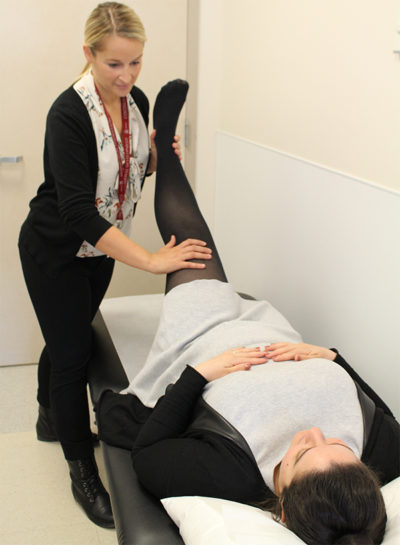
Back pain is one of the most common reasons to visit a doctor, chiropractor or physiotherapist (Power et al 2006). Four out of five adults will experience at least one episode of back pain at some time in their lives, according to Statistics Canada. Triaging these patients properly is very important. Incorrect assessment delays treatment and unnecessarily prolongs the wait times for patients who need surgery.
Since the clinic was fully implemented in February 2019, 600 patients have been seen and less than five percent of them have needed MRI or surgery.
More facts about the Rapid Access Clinic for Low Back Pain:
- Patients must have symptoms lasting less than one year to be eligible for the ISAEC.
- A referral from a family doctor who completed a short online training course is required.
- Patients referred to the clinic program are seen within four weeks.
- There is no hands-on treatment provided at the clinic. Practitioners in the community with specialist training perform that role.
- Patients who go to the clinic who require referrals for imaging, epidural injections or surgical consultation will see that process go faster than normal.

Support patient care and research at
The Ottawa Hospital
You might also like…
A guide to mindful movement for pain management
Are you seeking relief from pain, discomfort or stress? In these four videos, Physiotherapist Cristin Kargus guides you through gentle, mindful movements to help you reconnect with your body.
“Crash testers”: Preparing our health-care teams for real-life emergencies
Swapping patients for manikins, our Simulation Patient Safety Program recreates medical emergencies right in our hospital, allowing our care teams to “crash test” their responses to cardiac arrests, respiratory failures, mass casualty events and more. Dive into this Q&A for a closer look at how this training program enhances patient safety and quality of care.
The place to be: The Ottawa Hospital recognized as one of Canada’s most admired corporate cultures
The Ottawa Hospital (TOH) has been named one of Canada’s most admired corporate cultures. Guided by compassion and commitment to patient care, TOH has developed a workplace culture that inspires confidence and trust in our employees, patients and family members.
These nurses invite you to recycle their idea
At The Ottawa Hospital, we strive to lead in sustainable health care — something we can only achieve with the help of our frontline staff. Geriatric medicine nurses Caiti and Sabrina rallied their unit together to optimize recycling and divert waste from the landfill. Find out how they binned it to win it (And we can’t promise you that that’s the last recycling pun in this article!).
Watch: Princess Margriet of the Netherlands sent us this lovely video message for the Civic’s 100th anniversary
If you’ve ever wondered why tulips are so important to our city, the answer involves a world war, a royal family and The Ottawa Hospital’s Civic Campus. In this special video message, Her Royal Highness Princess Margriet of the Netherlands shares why the tulip is a special symbol of the endearing friendship between her country and Canada.
“We never thought we’d save THIS much”: Big win for sustainability at the Riverside Campus
With just a few simple fixes and replacements, our facilities team has massively reduced the carbon footprint at the Riverside Campus — the equivalent of taking 229 cars off the road for a year. So, what’s the team’s secret green sauce? Read this article to find out…


 To reset, hold the Ctrl key, then press 0.
To reset, hold the Ctrl key, then press 0.
